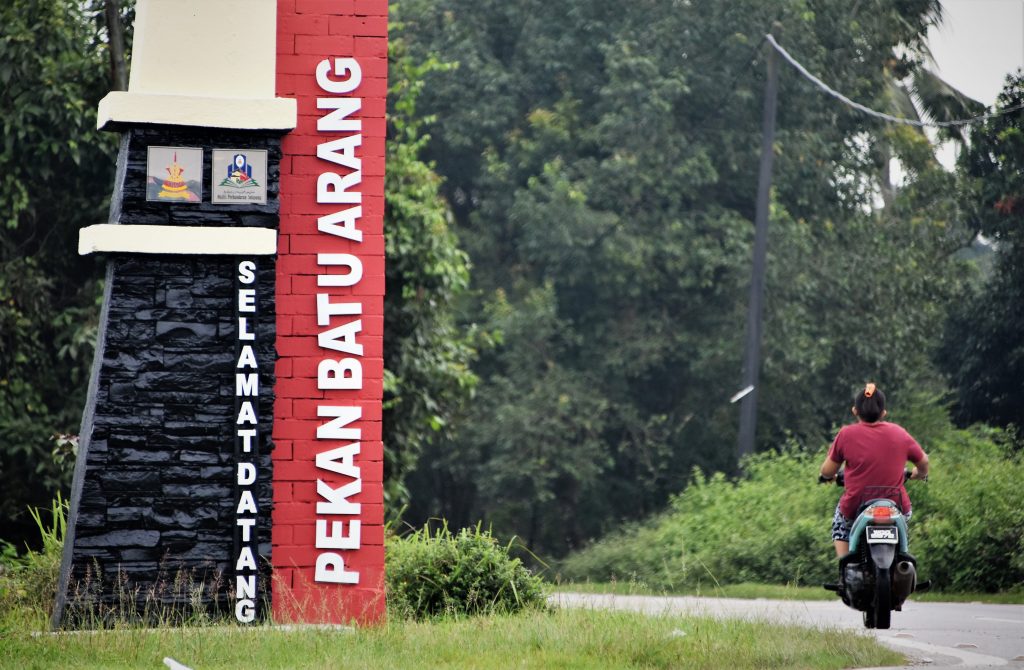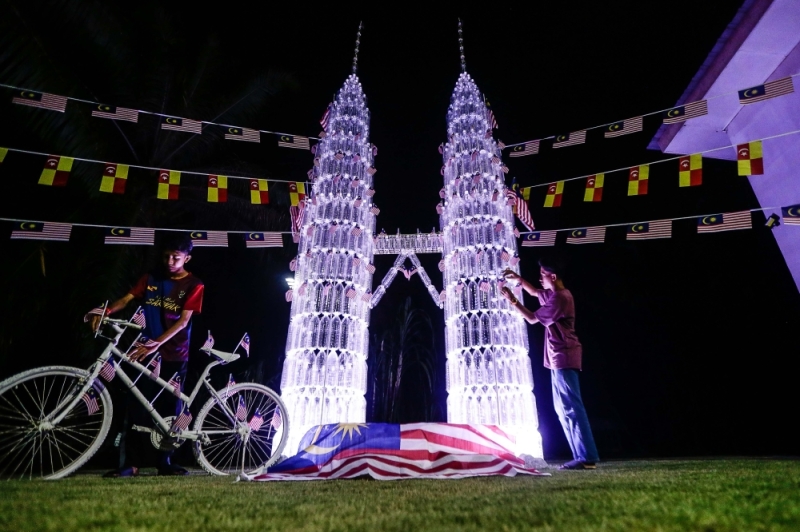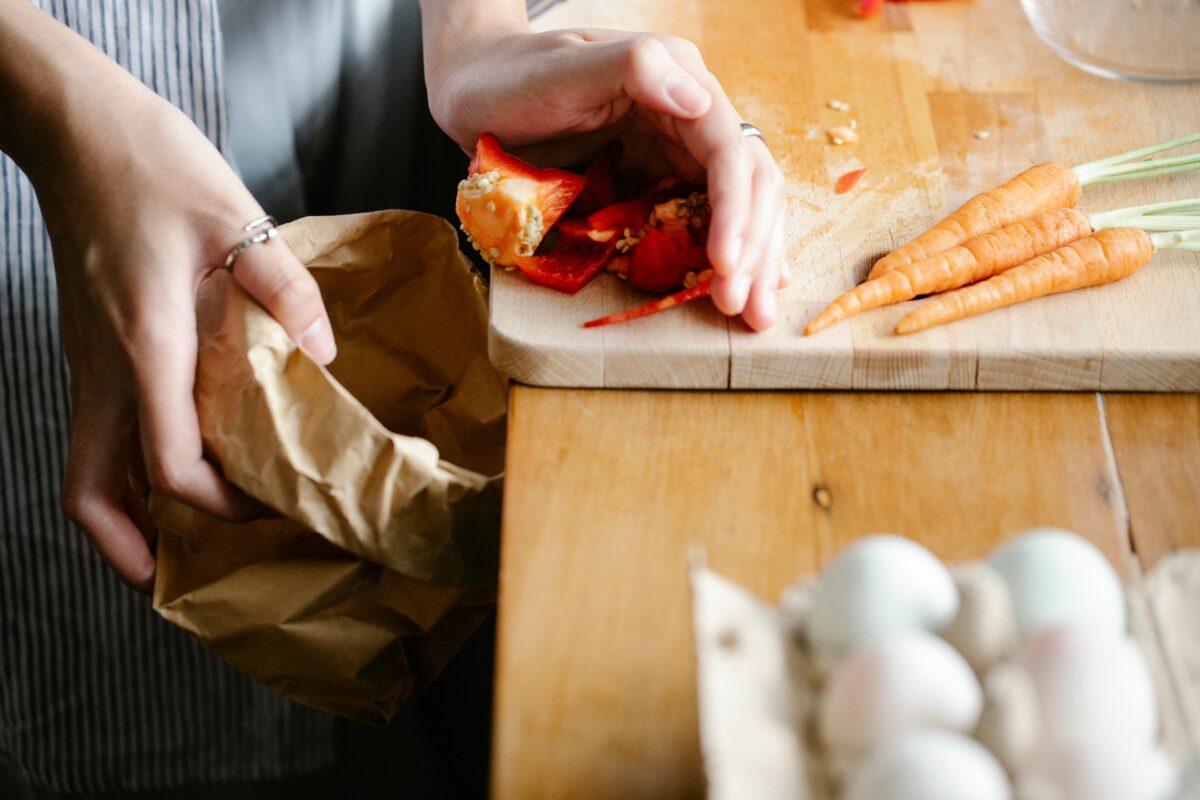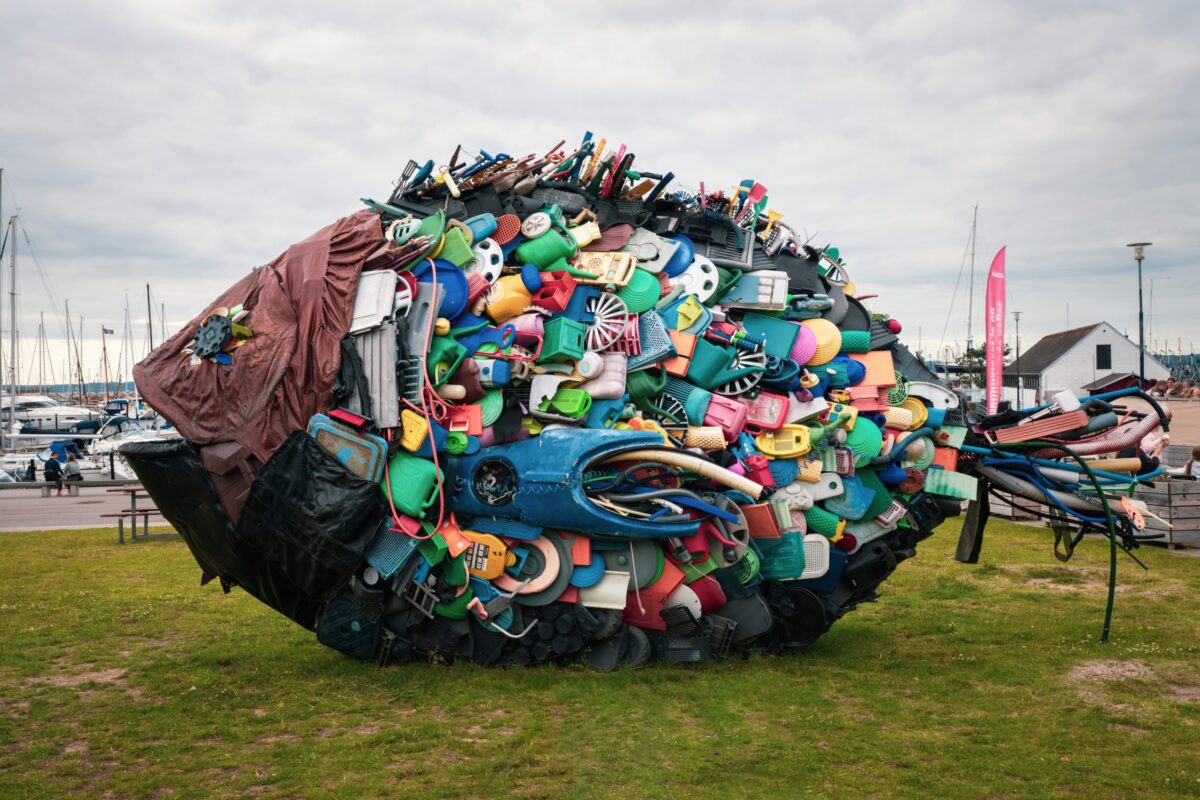The recent hoo-ha with the construction of incinerator a.k.a. waste-to-energy facility (a less controversial term) in Batu Arang town has gained traction in the news headlines.
About Batu Arang
Batu Arang is a small town (4,000 ha in area) in Gombak District, Selangor, Malaysia and 50 km from the capital Kuala Lumpur city. It is also located next to Rawang town.

Batu Arang, when translated from Malay to English, refers to the word “coal”. The town got its name associated to coal due to the discovery of large deposit of coal reserves back in 1908.
In 2011, Batu Arang was recognized as a heritage town following appeals from residents to the Selangor State in order to boost the town’s economy via tourism. If you are interested to further explore this serene town before it changes it’s shapes, do check out this guide that takes you to various relics preserved by the state and local council. Otherwise, you can watch this video below for a virtual tour to Batu Arang.
Source: Anis
The Sultan Idris Shah (SIS) Green Energy Plant
The proposed waste to energy (WTE) plant, named Sultan Idris Shah Green Energy Plant, is approved by the Selangor State Government in 2022 and will be operated by its government-linked corporation, KDEB Waste Management. KDEB partners with YTL Power International Bhd to develop the WTE plant that that can accept up to 2,400 tonnes of waste per day for combustion and extraction of energy up to 58 megawatts.
It is reported that the energy plant will be built on a 245-acre land. According to Jaringan Rawang Tolak Insinerator, the Selayang Municipal Council has published a notice to rezone the proposed site of the plant (Lot 3847). The rezoning application will change its original land use from residential use and water bodies to heavy industry.
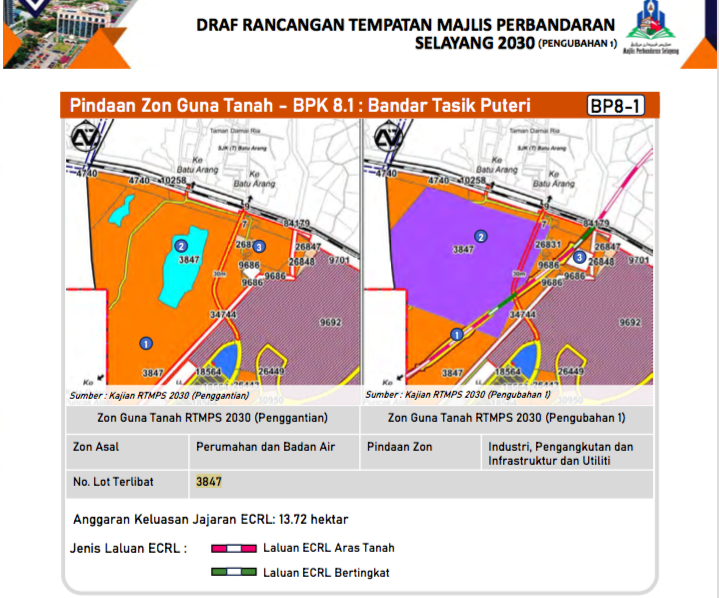
Source: Draf Rancangan Tempatan Majlis Perbandaran Selayang 2030
According to Draf Rancangan Tempatan Majlis Perbandaran Selayang, it was stated that Lot 3847 will only be used for heavy industrial activity which is for the Selangor Green Energy Eco Park’s (SGEEP) development.
Not In My Backyard
Besides Batu Arang’s residents, other residences such as Kota Puteri, Bandar Tasik Puteri, Bandar Sri Coalfield and Bandar Country Homes will be affected by this energy plant.
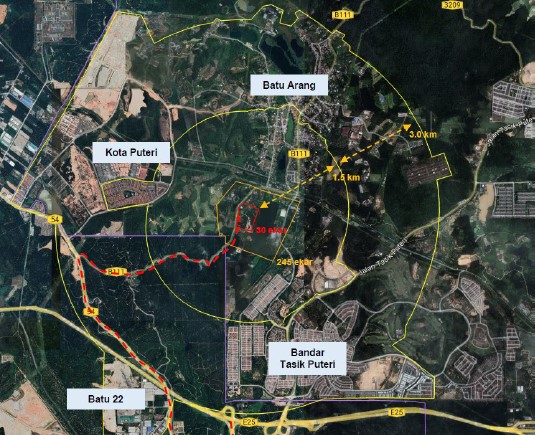
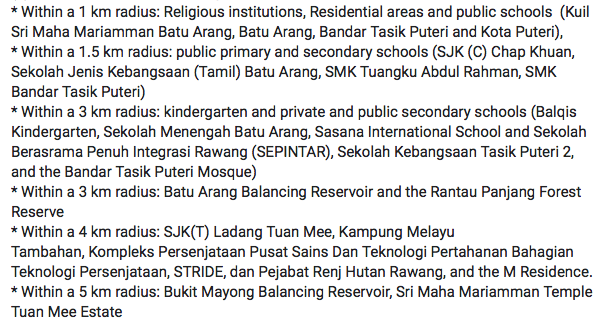
Source: Extract from petition against the incinerator
KDEB justifies that the decision to construct the plant near to residential areas is to increase the proximity of waste sources to the facility and thus, reduce the transportation costs and carbon emissions.
In comparison to other WTE plants that are to be developed by Worldwide Holdings Bhd, the not-in-my-backyard stigma is not as prominent due to the remoteness of the plants from residential area. Worldwide Holdings is currently undertaking the development of WTE plants in Jeram, Kuala Selangor and Tanjung Dua Belas in Kuala Langat.
Concerns on Emission and Pollution
Dioxins and furans emissions have always been the main concerns on the constructions of incinerators worldwide.
Unfortunately, in Malaysia, small scale incinerators in Pulau Pangkor, Cameron Highlands and Pulau Langkawi do not leave a good track records, tarnishing the image of WTE even further. Two years ago, our former Prime Minister, Tun Dr. Mahathir went to the ground to check on the performance of the incinerator sitting in Pulau Langkawi. When the incinerator was not able to perform based on its initial theoretical claim, rubbish were seen to be piling up around the facility resulting in other problems.
Source: Tun Dr Mahathir
Increasing Waste A Pertinent Issue
It is a realistic problem that we need to address when it comes to ever increasing landfill waste. With the current amount of waste generated and disposed at our existing sanitary landfills, the landfills only have lifespan of about two to three years.
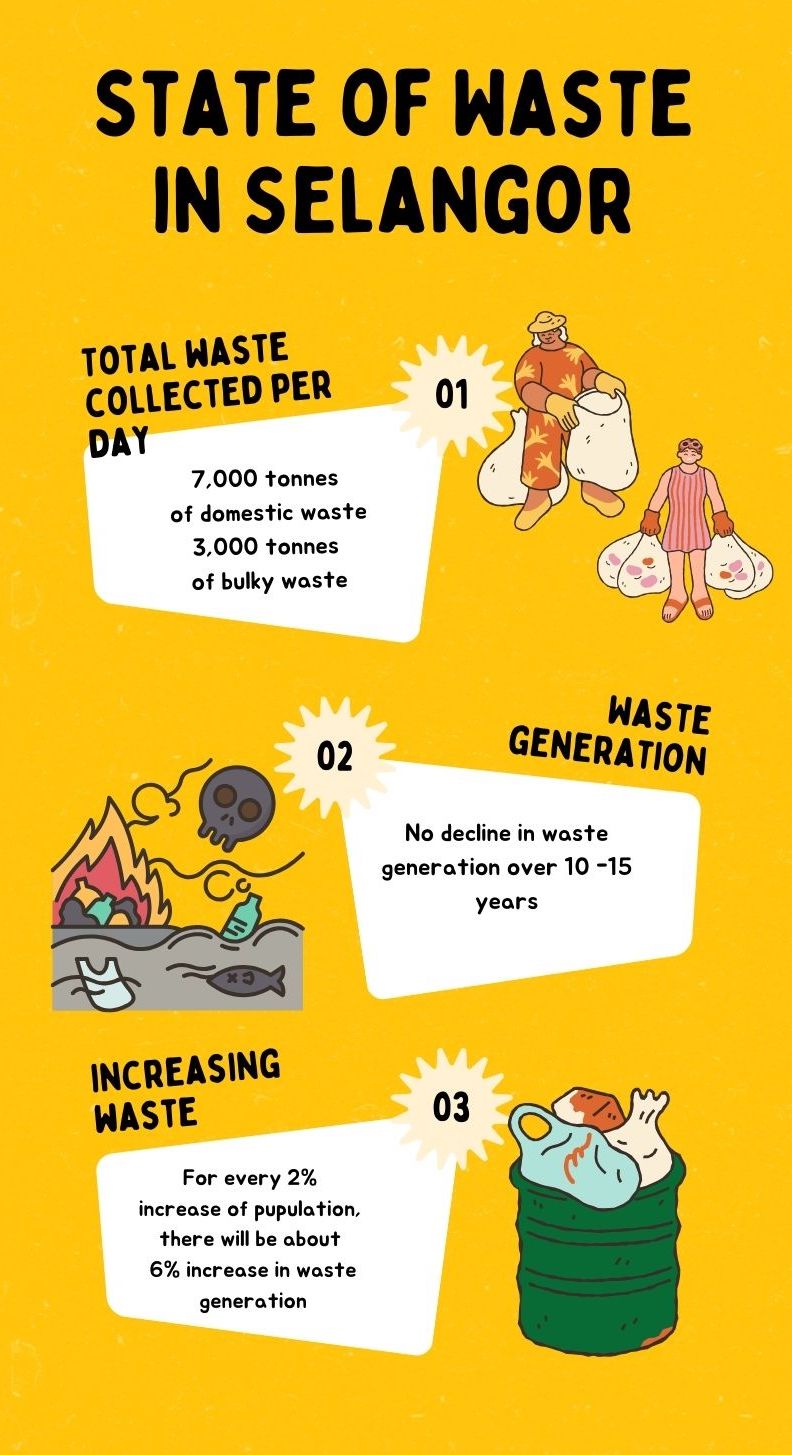
Design by Canva
Content source: The Edge
Is Recycling The Solution To The Ever-Increasing Waste?
“At least 5% of total waste will be diverted away from landfill when recycling practices are implemented,” said Ummi Kalthum, Director of SWCorp Federal Territory.
The target for national recycling rate has been set to be at 40% by 2025. Malaysia achieved 33.17% in 2022.
What are other efforts from the government to further boost its recycling rate?
Our government has enacted a law called Solid Waste and Public Cleansing Management Act 672 in 2007. One of the objectives of the law is to regulate the practice of waste segregation at source. When waste is segregated into the simplest categories of recyclables and non-recyclables, more opportunities are created for the recyclables to get into the recycling chain rather than to the landfill.
With such opportunity of redefining a waste as recyclable, the government has complemented the practices with the provision of recycling infrastructures in our vicinity.
For example, the Kuala Lumpur City Hall (DBKL) has established 1Komuniti 1Kitar Mula (1C1R) kiosks at some Rumah PPR – Program Perumahan Rakyat for Malaysian of B40 category – to provide ease for public housing residents to recycle and be rewarded with basic necessities. Recyclables such as paper, plastic, aluminium cans and used cooking oil can be converted to things such as wheat flour, condensed milk, sugar and cooking oil.
Besides, under the Act 672, the Federal Territories has also urged home owners to start segregating recyclables and non-recyclables to avoid receiving compound.
For landed property owners, RM50, RM100 and RM500 can be compounded for first, second and third offence respectively. Meanwhile, joint management bodies (JMBs) or management committees (MCs) of non-landed properties can be liable for RM100, RM200 and RM500 compound for first, second and third offence respectively.
The Act also applies for industrial, commercial and institutional sectors in which waste separation practice is not excluded from. Compound not exceeding RM5,000 or fine not exceeding RM10,000 can be imposed on any party that does not comply to the regulation. Some shopping complexes in Selangor have adopted the good practices of Act 672, though the Selangor state does not fall under the Act’s jurisdiction.
I personally think that there are efforts by the government and private sectors to boost recycling in Malaysia, however, it is not enough to make a big impact yet.
“100 drive-through recycling centres are targeted to be established in Malaysia to boost recycling rate from 33% to 40%,” said Nga Kor Ming, Local Government Development Minister.
However, the enforcement on house owners who did not segregate their waste at home must be concurrent in order for both hands to clap. Government must work towards providing the right infrastructures and facilities for the people to recycle and the people must support the initiative by utilizing them.
Be Part of The Solutions
Are we ready of incinerator when not-in-my-backyard is an inevitable sentiment to discuss, when the effort to maximize the recycling potential of a material has not fully achieved, when waste generation keeps increasing as we speak.
With the lack of habit to segregate waste by the majority of Malaysians, it is inevitable for waste-to-energy plant to be in the limelight as a quick fix for our avalanches of waste.
As cliché as it may sound, “waste separation” and “recycling” are two important practices to reduce waste in our life.
Why? Two reasons:
(1) If we can separate food waste which is mainly wet in nature, away from other drier waste, we can reduce the energy required to burn waste. Imagine burning an apple versus burning a piece of paper. Which is easier to burn? Paper, because it is dry and will get ignited easily. An apple will be burned eventually but it requires longer time and more fuel to burn.
(2) Once we separate dry waste out from wet waste, we can identify opportunities to recycle them. Dry waste can also be salvaged from being contaminated by wet waste, rendering it un-recyclable. Imagine having a soiled pizza box versus a clean carton box. Which one is more likely preferred for recycling?
All in all, in my humble opinion, what is even more important is one have to always think with an end in mind.
If we purchase something today, is it a thing that we really need? How will the end life of the thing look like? Can that thing of ours be easily dismantled and segregated for recycling? Can that thing of ours be gifted to someone else or sold as second-hand to extend its lifespan? Can that thing of ours be rotted / composted back to earth?
If only we held ourselves liable to the waste we create, then only we will see more creative solutions to overcome waste issue.
That also means that we do not need our government to propose the infamous incinerator as an urgent solution to our increasing waste.
